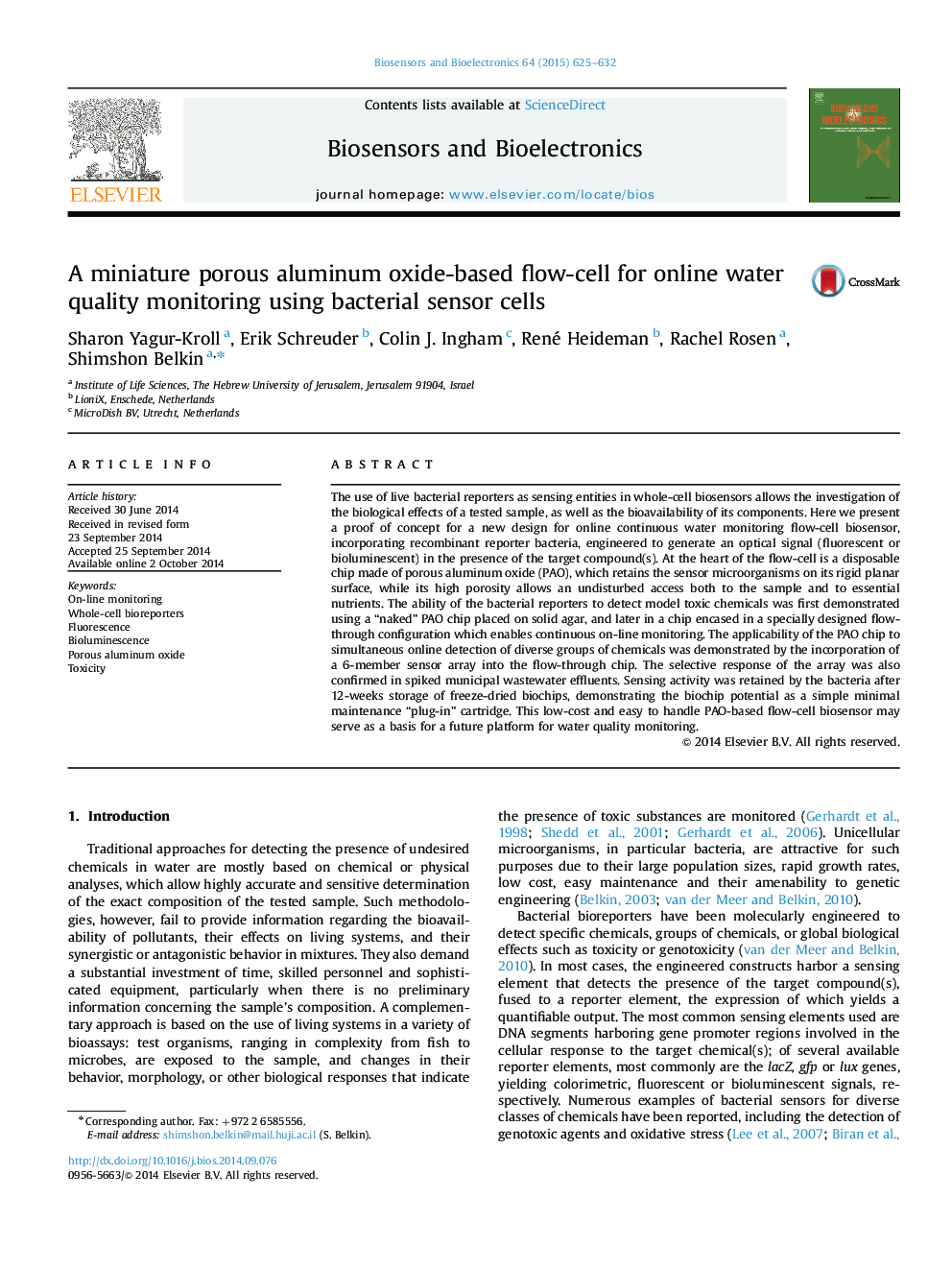| Article ID | Journal | Published Year | Pages | File Type |
|---|---|---|---|---|
| 7233202 | Biosensors and Bioelectronics | 2015 | 8 Pages |
Abstract
The use of live bacterial reporters as sensing entities in whole-cell biosensors allows the investigation of the biological effects of a tested sample, as well as the bioavailability of its components. Here we present a proof of concept for a new design for online continuous water monitoring flow-cell biosensor, incorporating recombinant reporter bacteria, engineered to generate an optical signal (fluorescent or bioluminescent) in the presence of the target compound(s). At the heart of the flow-cell is a disposable chip made of porous aluminum oxide (PAO), which retains the sensor microorganisms on its rigid planar surface, while its high porosity allows an undisturbed access both to the sample and to essential nutrients. The ability of the bacterial reporters to detect model toxic chemicals was first demonstrated using a “naked” PAO chip placed on solid agar, and later in a chip encased in a specially designed flow-through configuration which enables continuous on-line monitoring. The applicability of the PAO chip to simultaneous online detection of diverse groups of chemicals was demonstrated by the incorporation of a 6-member sensor array into the flow-through chip. The selective response of the array was also confirmed in spiked municipal wastewater effluents. Sensing activity was retained by the bacteria after 12-weeks storage of freeze-dried biochips, demonstrating the biochip potential as a simple minimal maintenance “plug-in” cartridge. This low-cost and easy to handle PAO-based flow-cell biosensor may serve as a basis for a future platform for water quality monitoring.
Related Topics
Physical Sciences and Engineering
Chemistry
Analytical Chemistry
Authors
Sharon Yagur-Kroll, Erik Schreuder, Colin J. Ingham, René Heideman, Rachel Rosen, Shimshon Belkin,
